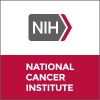
Clinical Surveillance vs. Anticoagulation for Low-risk Patients With Isolated Subsegmental Pulmonary...
Pulmonary EmbolismEmbolism7 moreThe clinical significance of pulmonary embolism (PE) limited to the subsegmental pulmonary arteries, so called isolated subsegmental pulmonary embolism (SSPE), remains controversial. Whether isolated SSPE represents "true" PE, a clinically more benign form of PE, a physiologic lung clearing process, or a false positive result (artifact) is currently unclear and hence, whether patients with isolated SSPE benefit from anticoagulant treatment is uncertain. Despite growing evidence from observational studies that withholding anticoagulation may be a safe option in selected patients with isolated SSPE (i.e., those without concomitant deep vein thrombosis, cancer, etc.), most patients with isolated SSPE receive anticoagulant treatment, which is associated with an increased risk of bleeding. The overall objective of the randomized controlled SAFE-SSPE trial is to evaluate the efficacy and safety of clinical surveillance without anticoagulation compared to anticoagulation treatment in low-risk patients with isolated SSPE.

Evaluating the Utility of Continuous Positive Airway Pressure in the Treatment of High Altitude...
Continuous Positive Airway PressureHigh Altitude Pulmonary EdemaThe primary objective is to evaluate the efficacy of continuous positive pressure on resolution of high-altitude pulmonary edema vs high flow oxygen. The secondary objective is to derive an incidence of high-altitude pulmonary edema based on the elevation and timing from which the subject arrives. Additionally, in a convenience sample of the base study population, an ultrasound evaluation for the presence of B lines in the lungs will be conducted after 2 hours.

Randomised Open Label Trial of Hypertonic Saline and Carbocisteine in Bronchiectasis (CLEAR)
BronchiectasisPatients with bronchiectasis (BE) suffer from a persistent cough, daily sputum expectoration, recurrent chest infections, and a poor health-related quality of life. Current guidelines for the management of BE highlight the lack of evidence to recommend mucoactive agents, such as hypertonic saline (HTS) and carbocisteine, to aid sputum-removal as part of standard care. The investigators hypothesise that mucoactive agents (HTS or cabocisteine, or a combination of both) are effective in reducing exacerbations over a 52-week period, compared to usual care.

Testing the Addition of the Drug Atezolizumab to the Usual Radiation Treatment for Patients With...
Lung Non-Small Cell CarcinomaStage I Lung Cancer AJCC v81 moreThis phase III trial studies how well atezolizumab added to the usual radiation therapy works in treating patients with stage I-IIA non-small cell lung cancer. Immunotherapy with monoclonal antibodies, such as atezolizumab, may help the body's immune system attack the cancer, and may interfere with the ability of tumor cells to grow and spread. Radiation therapy, such as stereotactic body radiation therapy, uses special equipment to position a patient and deliver radiation to tumors with high precision. This method can kill tumor cells with fewer doses over a shorter period and cause less damage to normal tissue. Giving atezolizumab and radiation therapy may work better than radiation therapy alone in treating patients with early non-small cell lung cancer.

A Study of Nivolumab and Chemotherapy Followed by Surgery for Mesothelioma
Malignant Pleural MesotheliomaThis study will test whether giving nivolumab in combination with pemetrexed and either cisplatin or carboplatin before surgery is a safe and effective approach to treating resectable mesothelioma without delaying surgery.

A Study Evaluating the Efficacy and Safety of Ralinepag to Improve Treatment Outcomes in PAH Patients...
PAHPulmonary Hypertension10 moreStudy ROR-PH-301, ADVANCE OUTCOMES, is designed to assess the efficacy and safety of ralinepag when added to pulmonary arterial hypertension (PAH) standard of care or PAH-specific background therapy in subjects with World Health Organization (WHO) Group 1 PAH.

Aggressive Thoracic Radiotherapy for Stage Ⅳ Non Small Cell Lung Cancer
CarcinomaNon-Small-Cell Lung2 moreThis phase II trial studies the safety and efficacy of aggressive thoracic radiotherapy in treating patients with non-small cell lung cancer that has not progressed after the first line systemic therapy. In this trial, patients with stage Ⅳ non small cell lung cancer who did not progress after first line systemic therapy will receive the aggressive thoracic radiotherapy, and the safety and efficacy of aggressive thoracic radiotherapy will be evaluated. The primary end points of the study are overall survival (OS), the secondary end points are local control rate, local progression free survival(LPFS), PFS, and toxicity and quality of life(QOL).

Efficacy and Safety of KD025 in Subjects With cGVHD After At Least 2 Prior Lines of Systemic Therapy...
Chronic Graft-versus-host-diseaseThis is a Phase 2, randomized, multicenter study to evaluate the efficacy and safety of KD025 in subjects with Chronic Graft Versus Host Disease (cGVHD) after at least 2 prior lines of systemic therapy

Novel Therapeutic Approaches for Treatment of CF Patients With W1282X Premature Termination Codon...
Cystic FibrosisBased on previous clinical findings, the investigator hypothesize that ivacaftor will have synergistic effects with drugs that facilitate truncated but partially active W1282X CFTR protein processing (tezacaftor) in patients with W1282X CFTR. In the current study, the investigators propose to directly test the efficacy of tezacaftor/ivacaftor (TEZ/IVA) and Trikafta for W1282X CFTR therapy in the clinic in comparison to ivacaftor alone.

NSCLC Isotoxic Hypofractionated Radiotherapy
CarcinomaNon-Small-Cell LungRadiotherapy plays an important role in non-small cell lung cancer (NSCLC), and concurrent chemoradiation is considered to be the standard treatment for locally advanced NSCLC. However, due to the patient's physical condition, comorbidities and other reasons, only about 1/3 of patients can receive concurrent chemoradiation. Radiotherapy alone or sequential chemoradiation has become the treatment protocol for most patients. Hypofractionated radiotherapy can be used in NSCLC because it can shorten the over treatment time and may potentially reduce the effect of accelerated repopulation and obtain higher biological effective dose(BED).So far, the vast majority of radiotherapy prescriptions have given a uniform dose of 60 Gy. This unified prescription dosage approach is completely inconsistent with the concept of precision treatment. The Netherlands MAASTRO put forward the concept of in silico radiotherapy prescription, that is: the normal tissue limits are uniform, such as: V20% ≤ 30%, spinal cord 0> 45Gy, etc., This radiation prescription could reach the limits of the normal tissue of every patient; if no one tissue limits were reached, the highest dose was set up to 79.2 Gy (1.8 Gy, BID). MAASTRO applied this "iso-toxic" radiotherapy prescription and used accelerated hyperfractionation technology so that each patient received the maximum individualized radiation dose as possible. We will integrate this concept with hypofractionated radiotherapy in order to further improve patient survival.
